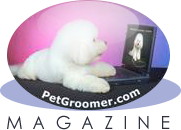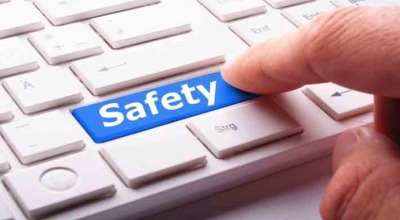by Matt Faulhaber, www.smartpractice.com
Did you know grooming professionals work in a hazardous occupation?
According to the Bureau of Labor Statistics, animal care and service workers have a higher rate of injuries and illnesses than the national average! And for good reasons. Groomers may be scratched, bitten, and kicked during the course of a grooming session, especially with a new or unknown dog or cat, or when the client has not informed the groomer of a current or recent illness, infection or injury which might affect its behavior when handled. And that’s not counting the fright and stress reactions (snapping, clawing) some pets may exhibit when grooming sensitive pet body areas.
Consider also that groomers may encounter cuts, puncture and other wounds from handling sharp scissors and clippers; shocks from using faulty electrical appliances and dryers; can suffer back, muscle strains and injuries from lifting and moving large, heavy, and even overweight dogs; breathe in fluff and fur and airborne mites; can develop allergic reactions to product chemicals and pet medications or contract infections from pets. All of which underscores the need to think safety in every step of business operations.
Salon Safety Assumptions First
As any experienced groomer knows, accidents do happen. Let’s assume the grooming business has adequate insurance; complies with all safety and health work regulations; checked that pet clients have current rabies and recommended vaccinations; keeps electrical, plumbing and air filtration systems up to date and dryers and appliances are in excellent working order; uses secure restraints; dries floors to avoid slips; has safety door locks with alarms to prevent and warn of a pet’s accidental escape; well-stocked first aid kits on hand; and declines aggressive pets as clients.
Yet, the groomers’ and staffs’ personal safety should not be overlooked. Using key supplies goes a long way in avoiding unfortunate personal safety incidences.
Preventive Protection for Personal Safety
Protecting the safety of salon personnel begins with these protections which should be incorporated in the salon’s standard operating procedures. Team members should be encouraged to use them daily. Better to use them and not need them rather than the reverse. Suggested are:
■ Gloves to reduce the risk of allergenic reactions from everyday exposure to cleaning, disinfecting, spraying or sterilizing product chemicals and pet coat contaminates while protecting hands during bathing and grooming. Glove choices include powder-free, secure grips, left/right hand fitted and latex-free which avoid latex sensitization leading to dermatitis, asthma or anaphylaxis, especially essential for those with known latex allergies, and bite proof gloves for those pets has who are known to have aggressive reactions to be handled.
■ Face masks to avoid long term work exposures from inhalation of animal dander and hair particles, minute debris thrown off from nail grinding and nail filing, and to filter fumes and gases from solutions and other materials. Face masks, either as ear loops and with nose and chin clip-ons, can feature dust and fluid barriers, chemical-free and latex-free style choices.
■ Eyewear and Face Shields to protect against dust, chemicals and splashes. Look for ones that are light weight, scratch and impact-resistant, and styles that fit over glasses where needed.
■ Muzzles to calm anxious or unruly pets. Available in a number of styles and sizes, better ones are designed to be break-resistant, shield pets’ vision, and do not come in contact with the pet’s face.
■ Jackets, Gowns, Caps, and Shoe Covers, some as inexpensive disposables, come in a variety of styles, weights, and features, including those with fluid barriers and latex-free, to offer additional protection.
Salon + Personal Safety Minimize Risks and Increase Workplace Confidence
While groomers and team members do everything possible to provide a safe facility environment and follow policies and procedures to ensure the health and well-being of their pet clients, personnel protection should not be overlooked. Stocking and using appropriate human protection also reduces the risk of accidents, illnesses, and injuries of all types and contributes to a productive and immensely satisfying workplace. Pet care is in itself a rewarding occupation. Make it even more so when prevention protection for all enhances the workday. ■



